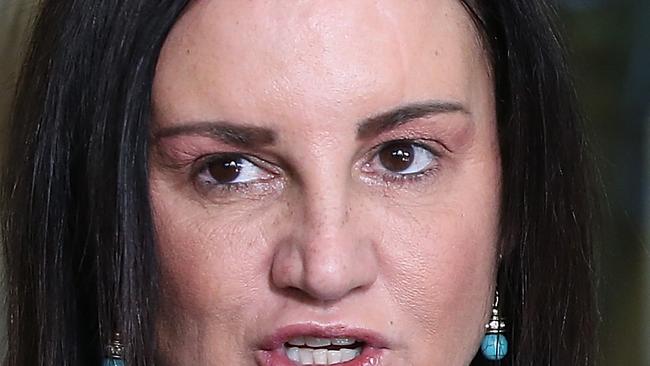Budget 2017: A turn to Labor ways to recover from 2014
It’s now taken three budgets to repair the fiscal damage caused by Tony Abbott and Joe Hockey in 2014, and this year is the first that their successors have got serious, and Scott Morrison has been ably assisted in this by the equally bad PR performance of the banks since then.
“Cry me a river,” said the Treasurer in the budget lock-up yesterday, when challenged on the new bank tax; it’s a refrain we’re likely to hear a lot of in the days ahead. As the lyrics of the song say: “The bridges were burned, now it’s your turn to cry.”
The past four years of budgets define a remarkable journey by the Coalition government. It started with Hockey’s the “end of the age of entitlement”, after he and Abbott burst into power with an agenda of “redefining the role of government in people’s lives”, to yesterday’s declaration by Morrison that “we cannot agree with those who say there is nothing the government can do”.
In fact, government intervention is the hallmark of this budget.
The surprisingly unleaked bank tax raises $1.5 billion a year, which the government will be keen to present as a sort of fine for bad behaviour, while the “banking executive accountability regime” adds some birch to the fire.
Moreover, this year’s budget papers include a new statement that lays bare what Abbott and Hockey did: they increased the operating deficit of the government, after excluding all capital spending, by $10bn in just that one year of 2014-15, after Labor had got it down by $12bn over the preceding three years.
That 2014 budget was when Hockey said: “The days of borrow and spend must come to an end … the time to fix the budget is now.”
Right. Spending went from 24 per cent of GDP in Labor’s last year to 25.6 per cent in 2015-16. Taxes went up as well, but not enough.
In 2008-09 the deficit blowout was partly caused by a collapse in receipts as the economy slowed, but that was not an excuse in 2014-15 — in fact, taxes increased.
Not that Labor has clean hands in any of this unedifying fiscal history — far from it. The “adjusted net operating balance” table in the papers shows that, since the supposedly “temporary” deficit of $26bn in 2008-09, the government has racked up $300bn in deficits, of which $200bn is “operating” deficit that is for salaries, pensions and grants.
And, what’s more, that is an equal-opportunity “bad debt” — half is Labor and half is Coalition.
The irony, of course, is that Morrison and Malcolm Turnbull have had to produce a sort of Labor budget to recover from the 2014 disaster, which might mean it gets through the Senate this time.
The result is that budget repair is very different to what it was going to be in 2014. In that budget, Hockey had payments declining from 25.9 per cent of GDP to 24.8 per cent by this year. They’re still 25.2 per cent now, with Morrison projecting outgoings coming down only slightly from here to 25 per cent of GDP.
In 2014, tax receipts were going to be 24.9 per cent of GDP this year, up from 23 per cent in 2013, but they’re actually only 23.8 per cent now, rising to 25.4 per cent to get the budget to surplus in 2020-21.
All of which makes it clear that the Coalition is not a low-taxing, low-spending government, despite the rhetoric to the contrary.
Mind you, the infrastructure spending in this budget is long overdue and the funding for the NDIS and Gonski had to be done — there was no real political alternative.
The overall politics of the budget are very potent indeed and will probably cause Bill Shorten and the ALP some pain, largely because it is a sort of Labor budget — housing affordability measures, infrastructure spending, NDIS, Gonski and bank-bashing as well!
The problem for Labor is that complaining that “they pinched our policies” is never a sustainable political strategy from opposition.
Whether allowing $30,000 of super to be used for a housing deposit and $300,000 from downsizing to be put into super actually neutralises the ALP’s negative gearing and capital gains tax ideas remains to be seen.
“Super for deposit” theoretically increases demand, while the downsizing incentive offsets that by increasing supply. While it is unknown yet if these things will politically neutralise the ALP’s policy of capping negative gearing and CGT, at least it gives ministers something to talk about.
The next, and possibly final, challenge for Turnbull is energy policy — a disaster entirely of the Liberal Party’s making.
In a month’s time the Chief Scientist, Alan Finkel, will recommend an emissions intensity scheme, which Turnbull has firmly ruled out — but he will soon have to rule it back in.
Today’s budget contained a series of measures headed “Energy reliability and affordability”, including the expansion of Snowy Hydro, but most of them are fiddling around the edges of the core issue — the need to price carbon.
This is rapidly becoming Australia’s biggest political issue; if Turnbull and Energy Minister Josh Frydenberg fail to get the Finkel recommendations through the Coalition partyroom, the politics of the 2017 budget will come crashing down around them.




To join the conversation, please log in. Don't have an account? Register
Join the conversation, you are commenting as Logout